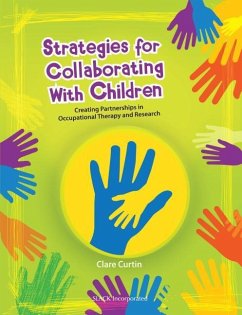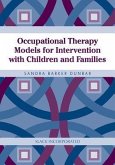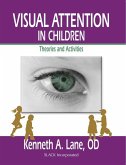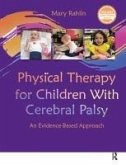Clare Curtin
Strategies for Collaborating With Children
Creating Partnerships in Occupational Therapy and Research
Clare Curtin
Strategies for Collaborating With Children
Creating Partnerships in Occupational Therapy and Research
- Broschiertes Buch
- Merkliste
- Auf die Merkliste
- Bewerten Bewerten
- Teilen
- Produkt teilen
- Produkterinnerung
- Produkterinnerung
Strategies for Collaborating With Children: Creating Partnerships in Occupational Therapy and Research applies client-centered and strengths-based theories to pediatric practice.
Andere Kunden interessierten sich auch für
![Collaborating for Health Collaborating for Health]() Paul ThomasCollaborating for Health177,99 €
Paul ThomasCollaborating for Health177,99 €![Occupational Therapy Models for Intervention with Children and Families Occupational Therapy Models for Intervention with Children and Families]() Sandra DunbarOccupational Therapy Models for Intervention with Children and Families98,99 €
Sandra DunbarOccupational Therapy Models for Intervention with Children and Families98,99 €![Visual Attention in Children Visual Attention in Children]() Kenneth LaneVisual Attention in Children99,99 €
Kenneth LaneVisual Attention in Children99,99 €![Working with Children on the Streets of Brazil Working with Children on the Streets of Brazil]() Walter De OliveiraWorking with Children on the Streets of Brazil68,99 €
Walter De OliveiraWorking with Children on the Streets of Brazil68,99 €![Occupational Therapy for Adults With Intellectual Disability Occupational Therapy for Adults With Intellectual Disability]() Kimberly BryzeOccupational Therapy for Adults With Intellectual Disability84,99 €
Kimberly BryzeOccupational Therapy for Adults With Intellectual Disability84,99 €![Physical Therapy for Children With Cerebral Palsy Physical Therapy for Children With Cerebral Palsy]() Mary RahlinPhysical Therapy for Children With Cerebral Palsy99,99 €
Mary RahlinPhysical Therapy for Children With Cerebral Palsy99,99 €![Practical Strategies for Greatness in Nursing Practical Strategies for Greatness in Nursing]() Matthew WynnPractical Strategies for Greatness in Nursing67,99 €
Matthew WynnPractical Strategies for Greatness in Nursing67,99 €-
-
-
Strategies for Collaborating With Children: Creating Partnerships in Occupational Therapy and Research applies client-centered and strengths-based theories to pediatric practice.
Produktdetails
- Produktdetails
- Verlag: Routledge
- Seitenzahl: 440
- Erscheinungstermin: 1. August 2016
- Englisch
- Abmessung: 280mm x 216mm x 24mm
- Gewicht: 1099g
- ISBN-13: 9781630911041
- ISBN-10: 1630911046
- Artikelnr.: 48387676
- Herstellerkennzeichnung
- Libri GmbH
- Europaallee 1
- 36244 Bad Hersfeld
- gpsr@libri.de
- Verlag: Routledge
- Seitenzahl: 440
- Erscheinungstermin: 1. August 2016
- Englisch
- Abmessung: 280mm x 216mm x 24mm
- Gewicht: 1099g
- ISBN-13: 9781630911041
- ISBN-10: 1630911046
- Artikelnr.: 48387676
- Herstellerkennzeichnung
- Libri GmbH
- Europaallee 1
- 36244 Bad Hersfeld
- gpsr@libri.de
Dr. Clare Curtin has been an occupational therapist for 36 years. Her degree specialties include social work, occupational therapy, rehabilitation counseling, and educational psychology. Over the years, she has helped children in hospitals, psychiatric units, day treatment programs, and preschools and elementary schools. She has also worked in an outpatient pediatric oncology clinic. In the 1990s, she designed and completed the first in-depth study of the occupational therapy collaboration process to highlight children's perspectives. Her research incorporated child-friendly, original, and playful participatory methods. Dr. Curtin has lectured extensively at the local, state, national, and international levels, emphasizing client-centered and strengths-based therapy. She has had intensive training in mediation, allowing her to provide expertise on resolving conflict. Throughout her career, she has advocated for children to have a voice in therapy and research. In her free time, she enjoys writing, photography, gardening, and traveling.
Dedication Acknowledgments About the Author Introduction Section I History,
Theories, and Context of Collaboration With Children Chapter 1 Historical
Review of Collaboration in Occupational Therapy Description of changes in
collaboration during occupational therapy's history and influences of the
disability rights movement. Chapter 2 Theoretical Underpinnings of a Model
of Collaboration Description of a conceptual model of collaboration and the
incorporation of client-centered and strengths-based theories in
occupational therapy with children and adults. Chapter 3 An Ecological
Approach to Enhancing Children's Competencies and Participation Description
of (1) changes in the views of children, childhood, and development; (2)
establishment of children's rights and childhood studies; and (3)
collaborative consultation and system change. Section II Putting
Collaboration Into Practice Chapter 4 Introduce Yourself and Explain
Therapy Ways to match children's desired level of interaction, describe
therapy, and start conversations. Chapter 5 Establish a Collaborative Frame
Development of a collaborative frame by (1) creating a safe place, (2)
establishing a Partnership, (3) using a strengths-based approach, and (4)
co-creating educational experiences. Chapter 6 Learn About Children and
Their Worlds Through Interviews Ways to create meaningful conversations
through interviews with children. Chapter 7 Observe and Promote Stress-Free
Testing Considerations for conducting observations and methods for making
testing pleasant and successful. Chapter 8 Collaborate to Determine the
Purpose of Therapy Ways to conduct child-friendly, client-centered, and
strengths-based treatment planning with children in addition to
collaborating with caregivers and educational staff. Chapter 9 Teach
Children Self-Advocacy Methods to (1) foster self-advocacy, including
assertiveness; (2) involve children in decision making and respect their
right to say no; and (3) teach them to let adults know if and when they
want help. Chapter 10 Become Partners With You as a Guide Ways to promote
therapeutic use of self and assume the role of a guide. Chapter 11 Set
Respectful Limits Methods to (1) maintain a positive relationship while
keeping children safe, helping them learn from their actions, and allowing
them to save face; and (2) get a group to settle down. Chapter 12 Teach
Children to Regulate Their Emotions, Thoughts, and Bodies Ways to assist
children with their feelings and teach strategies for calming and conflict
resolution. Chapter 13 Avoid Power Struggles Creative approaches for
preventing, circumventing, and getting out of power struggles. Chapter 14
Co-Create Educational Experiences That Are Challenging and Fun Methods to
(1) create therapeutic learning experiences by incorporating challenge and
fun factors and (2) use child-friendly approaches for giving directions and
helping children get started. Chapter 15 Help Children Face Challenges Ways
to (1) help hesitant children start and continue; (2) teach them how to
handle mistakes and deal with losing; and (3) allow them to save face while
getting assistance. Chapter 16 Create Smooth Transitions Methods to create
routines, prepare for changes, have seamless transitions, and make therapy
flow. Chapter 17 Promote Therapeutic Endings Ways to (1) prepare children
before ending a session; (2) make clean up easy and fun; (3) review
progress; and (4) achieve closure at the end of therapy. Chapter 18 Methods
to Enhance Children's Participation in Research Descriptions of (1) how to
elicit children's knowledge and involve them in the research process from
the beginning to the end; (2) the use of verbal, visual, and activity-based
Participatory research methods; and (3) adaptations for obtaining the
voices of children with disabilities and increasing their Participation.
Chapter 19 Take the Road Less Traveled: One Last Story and Parting Thoughts
Appendix: Answers to the Review Questions Index
Theories, and Context of Collaboration With Children Chapter 1 Historical
Review of Collaboration in Occupational Therapy Description of changes in
collaboration during occupational therapy's history and influences of the
disability rights movement. Chapter 2 Theoretical Underpinnings of a Model
of Collaboration Description of a conceptual model of collaboration and the
incorporation of client-centered and strengths-based theories in
occupational therapy with children and adults. Chapter 3 An Ecological
Approach to Enhancing Children's Competencies and Participation Description
of (1) changes in the views of children, childhood, and development; (2)
establishment of children's rights and childhood studies; and (3)
collaborative consultation and system change. Section II Putting
Collaboration Into Practice Chapter 4 Introduce Yourself and Explain
Therapy Ways to match children's desired level of interaction, describe
therapy, and start conversations. Chapter 5 Establish a Collaborative Frame
Development of a collaborative frame by (1) creating a safe place, (2)
establishing a Partnership, (3) using a strengths-based approach, and (4)
co-creating educational experiences. Chapter 6 Learn About Children and
Their Worlds Through Interviews Ways to create meaningful conversations
through interviews with children. Chapter 7 Observe and Promote Stress-Free
Testing Considerations for conducting observations and methods for making
testing pleasant and successful. Chapter 8 Collaborate to Determine the
Purpose of Therapy Ways to conduct child-friendly, client-centered, and
strengths-based treatment planning with children in addition to
collaborating with caregivers and educational staff. Chapter 9 Teach
Children Self-Advocacy Methods to (1) foster self-advocacy, including
assertiveness; (2) involve children in decision making and respect their
right to say no; and (3) teach them to let adults know if and when they
want help. Chapter 10 Become Partners With You as a Guide Ways to promote
therapeutic use of self and assume the role of a guide. Chapter 11 Set
Respectful Limits Methods to (1) maintain a positive relationship while
keeping children safe, helping them learn from their actions, and allowing
them to save face; and (2) get a group to settle down. Chapter 12 Teach
Children to Regulate Their Emotions, Thoughts, and Bodies Ways to assist
children with their feelings and teach strategies for calming and conflict
resolution. Chapter 13 Avoid Power Struggles Creative approaches for
preventing, circumventing, and getting out of power struggles. Chapter 14
Co-Create Educational Experiences That Are Challenging and Fun Methods to
(1) create therapeutic learning experiences by incorporating challenge and
fun factors and (2) use child-friendly approaches for giving directions and
helping children get started. Chapter 15 Help Children Face Challenges Ways
to (1) help hesitant children start and continue; (2) teach them how to
handle mistakes and deal with losing; and (3) allow them to save face while
getting assistance. Chapter 16 Create Smooth Transitions Methods to create
routines, prepare for changes, have seamless transitions, and make therapy
flow. Chapter 17 Promote Therapeutic Endings Ways to (1) prepare children
before ending a session; (2) make clean up easy and fun; (3) review
progress; and (4) achieve closure at the end of therapy. Chapter 18 Methods
to Enhance Children's Participation in Research Descriptions of (1) how to
elicit children's knowledge and involve them in the research process from
the beginning to the end; (2) the use of verbal, visual, and activity-based
Participatory research methods; and (3) adaptations for obtaining the
voices of children with disabilities and increasing their Participation.
Chapter 19 Take the Road Less Traveled: One Last Story and Parting Thoughts
Appendix: Answers to the Review Questions Index
Dedication Acknowledgments About the Author Introduction Section I History,
Theories, and Context of Collaboration With Children Chapter 1 Historical
Review of Collaboration in Occupational Therapy Description of changes in
collaboration during occupational therapy's history and influences of the
disability rights movement. Chapter 2 Theoretical Underpinnings of a Model
of Collaboration Description of a conceptual model of collaboration and the
incorporation of client-centered and strengths-based theories in
occupational therapy with children and adults. Chapter 3 An Ecological
Approach to Enhancing Children's Competencies and Participation Description
of (1) changes in the views of children, childhood, and development; (2)
establishment of children's rights and childhood studies; and (3)
collaborative consultation and system change. Section II Putting
Collaboration Into Practice Chapter 4 Introduce Yourself and Explain
Therapy Ways to match children's desired level of interaction, describe
therapy, and start conversations. Chapter 5 Establish a Collaborative Frame
Development of a collaborative frame by (1) creating a safe place, (2)
establishing a Partnership, (3) using a strengths-based approach, and (4)
co-creating educational experiences. Chapter 6 Learn About Children and
Their Worlds Through Interviews Ways to create meaningful conversations
through interviews with children. Chapter 7 Observe and Promote Stress-Free
Testing Considerations for conducting observations and methods for making
testing pleasant and successful. Chapter 8 Collaborate to Determine the
Purpose of Therapy Ways to conduct child-friendly, client-centered, and
strengths-based treatment planning with children in addition to
collaborating with caregivers and educational staff. Chapter 9 Teach
Children Self-Advocacy Methods to (1) foster self-advocacy, including
assertiveness; (2) involve children in decision making and respect their
right to say no; and (3) teach them to let adults know if and when they
want help. Chapter 10 Become Partners With You as a Guide Ways to promote
therapeutic use of self and assume the role of a guide. Chapter 11 Set
Respectful Limits Methods to (1) maintain a positive relationship while
keeping children safe, helping them learn from their actions, and allowing
them to save face; and (2) get a group to settle down. Chapter 12 Teach
Children to Regulate Their Emotions, Thoughts, and Bodies Ways to assist
children with their feelings and teach strategies for calming and conflict
resolution. Chapter 13 Avoid Power Struggles Creative approaches for
preventing, circumventing, and getting out of power struggles. Chapter 14
Co-Create Educational Experiences That Are Challenging and Fun Methods to
(1) create therapeutic learning experiences by incorporating challenge and
fun factors and (2) use child-friendly approaches for giving directions and
helping children get started. Chapter 15 Help Children Face Challenges Ways
to (1) help hesitant children start and continue; (2) teach them how to
handle mistakes and deal with losing; and (3) allow them to save face while
getting assistance. Chapter 16 Create Smooth Transitions Methods to create
routines, prepare for changes, have seamless transitions, and make therapy
flow. Chapter 17 Promote Therapeutic Endings Ways to (1) prepare children
before ending a session; (2) make clean up easy and fun; (3) review
progress; and (4) achieve closure at the end of therapy. Chapter 18 Methods
to Enhance Children's Participation in Research Descriptions of (1) how to
elicit children's knowledge and involve them in the research process from
the beginning to the end; (2) the use of verbal, visual, and activity-based
Participatory research methods; and (3) adaptations for obtaining the
voices of children with disabilities and increasing their Participation.
Chapter 19 Take the Road Less Traveled: One Last Story and Parting Thoughts
Appendix: Answers to the Review Questions Index
Theories, and Context of Collaboration With Children Chapter 1 Historical
Review of Collaboration in Occupational Therapy Description of changes in
collaboration during occupational therapy's history and influences of the
disability rights movement. Chapter 2 Theoretical Underpinnings of a Model
of Collaboration Description of a conceptual model of collaboration and the
incorporation of client-centered and strengths-based theories in
occupational therapy with children and adults. Chapter 3 An Ecological
Approach to Enhancing Children's Competencies and Participation Description
of (1) changes in the views of children, childhood, and development; (2)
establishment of children's rights and childhood studies; and (3)
collaborative consultation and system change. Section II Putting
Collaboration Into Practice Chapter 4 Introduce Yourself and Explain
Therapy Ways to match children's desired level of interaction, describe
therapy, and start conversations. Chapter 5 Establish a Collaborative Frame
Development of a collaborative frame by (1) creating a safe place, (2)
establishing a Partnership, (3) using a strengths-based approach, and (4)
co-creating educational experiences. Chapter 6 Learn About Children and
Their Worlds Through Interviews Ways to create meaningful conversations
through interviews with children. Chapter 7 Observe and Promote Stress-Free
Testing Considerations for conducting observations and methods for making
testing pleasant and successful. Chapter 8 Collaborate to Determine the
Purpose of Therapy Ways to conduct child-friendly, client-centered, and
strengths-based treatment planning with children in addition to
collaborating with caregivers and educational staff. Chapter 9 Teach
Children Self-Advocacy Methods to (1) foster self-advocacy, including
assertiveness; (2) involve children in decision making and respect their
right to say no; and (3) teach them to let adults know if and when they
want help. Chapter 10 Become Partners With You as a Guide Ways to promote
therapeutic use of self and assume the role of a guide. Chapter 11 Set
Respectful Limits Methods to (1) maintain a positive relationship while
keeping children safe, helping them learn from their actions, and allowing
them to save face; and (2) get a group to settle down. Chapter 12 Teach
Children to Regulate Their Emotions, Thoughts, and Bodies Ways to assist
children with their feelings and teach strategies for calming and conflict
resolution. Chapter 13 Avoid Power Struggles Creative approaches for
preventing, circumventing, and getting out of power struggles. Chapter 14
Co-Create Educational Experiences That Are Challenging and Fun Methods to
(1) create therapeutic learning experiences by incorporating challenge and
fun factors and (2) use child-friendly approaches for giving directions and
helping children get started. Chapter 15 Help Children Face Challenges Ways
to (1) help hesitant children start and continue; (2) teach them how to
handle mistakes and deal with losing; and (3) allow them to save face while
getting assistance. Chapter 16 Create Smooth Transitions Methods to create
routines, prepare for changes, have seamless transitions, and make therapy
flow. Chapter 17 Promote Therapeutic Endings Ways to (1) prepare children
before ending a session; (2) make clean up easy and fun; (3) review
progress; and (4) achieve closure at the end of therapy. Chapter 18 Methods
to Enhance Children's Participation in Research Descriptions of (1) how to
elicit children's knowledge and involve them in the research process from
the beginning to the end; (2) the use of verbal, visual, and activity-based
Participatory research methods; and (3) adaptations for obtaining the
voices of children with disabilities and increasing their Participation.
Chapter 19 Take the Road Less Traveled: One Last Story and Parting Thoughts
Appendix: Answers to the Review Questions Index









